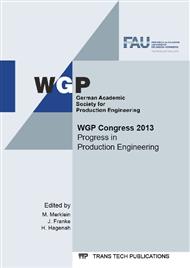p.303
p.311
p.319
p.327
p.335
p.343
p.350
p.359
p.367
VR Enhanced Scenario Technique Supporting the Early Phases of Factory Planning
Abstract:
Industrial companies have to face fast changing markets and increasing customer demands regarding individual configuration of products. Within this turbulent environment initially defined planning circumstances and assumptions are no longer reliable over the whole factory life-cycle. As one approach to react on such uncertainties, flexible production planning is considered. Factories should be able to adapt according to changing demands and suit to even unforeseen constraints. To allow such flexibility, the factory planning process must be executed with special attention on the early phases. While setting up the key objectives and establishing the project basis, a focus on flexibility has to be mandatory. The constraints on which planning bear on need to be defined, but also their adaptation over the factory life-cycle must be considered. To overcome this dilemma of required level of detail but concurrent uncertain future estimations, scenario technique is proposed as a method in strategic company management. This paper deals with the extension of the scenario technique to be applicable during factory planning as one operative method in the early phases of ‘preparation’ and ‘structure planning’. By using immersive Virtual Reality (VR) tools, a visualization component will be added. This will make future scenarios more graspable for multi-domain planning teams and serve as a mean of communication on which decision making can be set up.
Info:
Periodical:
Pages:
343-349
Citation:
Online since:
September 2013
Authors:
Keywords:
Price:
Сopyright:
© 2013 Trans Tech Publications Ltd. All Rights Reserved
Share:
Citation:


